
The Enchanting Wilderness of Allegheny National Forest
Discover Allegheny National Forest: Pennsylvania's premier destination for hiking, camping, and outdoor adventures, featuring stunning landscapes and rich history.
Nestled in the heart of Pennsylvania, Allegheny National Forest is a haven for nature enthusiasts and adventure seekers alike. Spanning over 500,000 acres, the forest offers a diverse landscape of dense woodlands, rolling hills, and serene waterways. It's an ideal destination for hiking, camping, and exploring the great outdoors. The forest is rich in history and natural beauty. Visitors can wander through miles of scenic trails, including the popular North Country National Scenic Trail, which offers breathtaking views of the forest's lush greenery and abundant wildlife. For those interested in water activities, the Allegheny Reservoir provides opportunities for boating, fishing, and swimming. Allegheny National Forest is also home to several historic sites and cultural landmarks. The Kinzua Bridge State Park features a skywalk that offers stunning views of the Kinzua Gorge, while the nearby town of Warren is known for its charming historic district. Whether you're seeking relaxation or adventure, Allegheny National Forest promises an unforgettable experience.
Local tips in Allegheny National Forest
- Plan your visit in the fall to experience the vibrant foliage and cooler temperatures.
- Bring a map and compass as cell service can be spotty in some areas of the forest.
- Check the weather forecast and dress in layers to be prepared for changing conditions.
- Visit the Kinzua Bridge Skywalk early in the morning to avoid crowds.
- Pack insect repellent to stay comfortable during your hikes and outdoor activities.
The Enchanting Wilderness of Allegheny National Forest
Nestled in the heart of Pennsylvania, Allegheny National Forest is a haven for nature enthusiasts and adventure seekers alike. Spanning over 500,000 acres, the forest offers a diverse landscape of dense woodlands, rolling hills, and serene waterways. It's an ideal destination for hiking, camping, and exploring the great outdoors. The forest is rich in history and natural beauty. Visitors can wander through miles of scenic trails, including the popular North Country National Scenic Trail, which offers breathtaking views of the forest's lush greenery and abundant wildlife. For those interested in water activities, the Allegheny Reservoir provides opportunities for boating, fishing, and swimming. Allegheny National Forest is also home to several historic sites and cultural landmarks. The Kinzua Bridge State Park features a skywalk that offers stunning views of the Kinzua Gorge, while the nearby town of Warren is known for its charming historic district. Whether you're seeking relaxation or adventure, Allegheny National Forest promises an unforgettable experience.
When is the best time to go to Allegheny National Forest?
Iconic landmarks you can’t miss
Rimrock Overlook
Discover breathtaking views and serene landscapes at Rimrock Overlook in Bradford, Pennsylvania, a perfect escape for nature lovers and photographers.
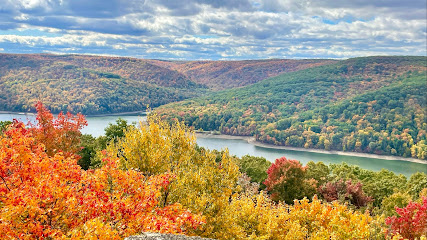
Cook Forest State Park Office
Discover the serene landscapes and diverse wildlife of Cook Forest State Park, a hidden gem for outdoor enthusiasts in Pennsylvania.

Minister Creek Scenic Overlook
Discover breathtaking landscapes and serene hiking trails at the Minister Creek Scenic Overlook in Pennsylvania's Allegheny National Forest.
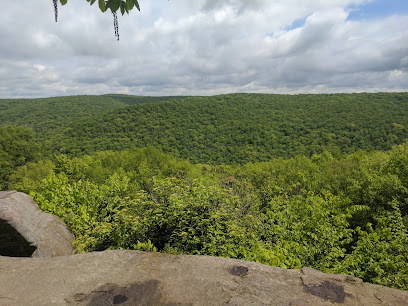
Henry Run Sawmill Dam
Explore the scenic beauty and outdoor adventures at Henry Run Sawmill Dam in the Allegheny National Forest, a must-visit hiking destination.
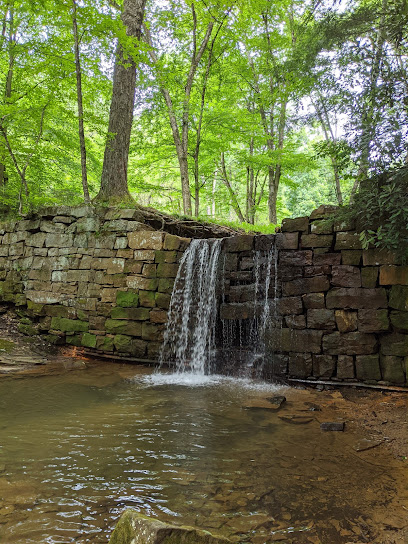
Allegheny National Forest - Camping & Cabins
Experience the beauty of nature at Allegheny National Forest, where camping and cozy cabins await amidst stunning landscapes and abundant wildlife.
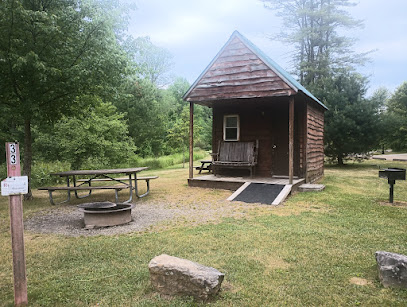
Allegheny National Forest (ANF) Northern Entry
Discover the beauty of Allegheny National Forest, a haven for outdoor adventures and natural wonders in Pennsylvania.
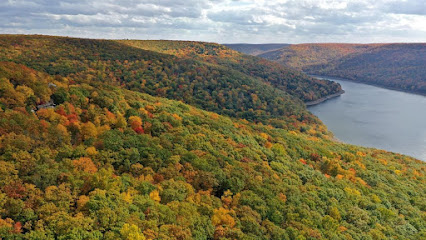
Memorial Fountain at Cook Forest State Park
Discover tranquility at the Memorial Fountain in Cook Forest State Park, a serene tribute amidst Pennsylvania's natural beauty.

Unmissable attractions to see
Point State Park
Explore the natural beauty and historical significance of Point State Park, a serene oasis in the heart of Pittsburgh, Pennsylvania.
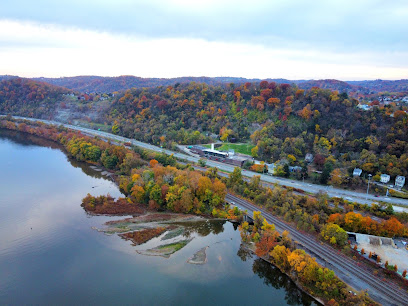
Kinzua Bridge State Park
Discover the breathtaking views and rich history at Kinzua Bridge State Park, a premier destination for nature lovers and adventure seekers alike.
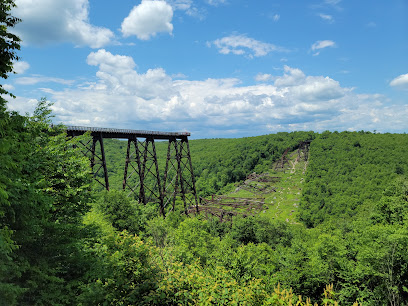
Penn's Cave and Wildlife Park
Explore the breathtaking underground caverns and diverse wildlife at Penn's Cave and Wildlife Park in Centre Hall, Pennsylvania—a must-visit natural wonder.
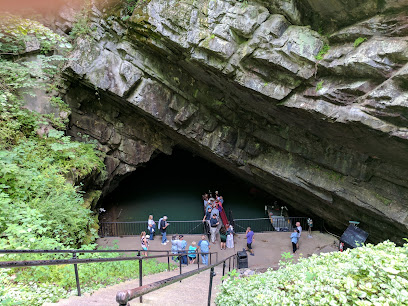
Allegany State Park
Explore the majestic Allegany State Park: a natural retreat offering outdoor adventures, stunning landscapes, and rich wildlife in New York.
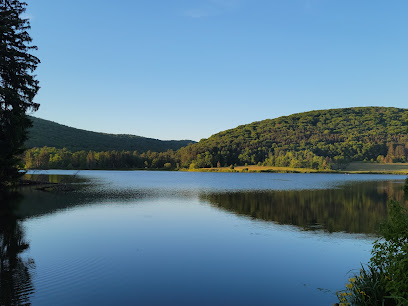
Zippo / Case Museum & Flagship Store
Explore the heritage of Zippo lighters and Case knives at the Zippo/Case Museum in Bradford, Pennsylvania, a must-visit for enthusiasts of American craftsmanship.
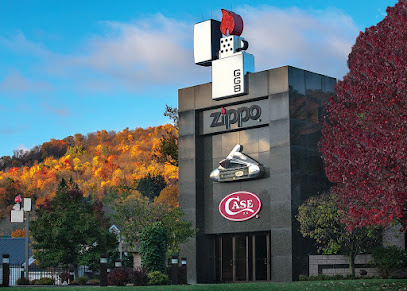
Winslow Hill Elk Viewing Area
Experience the wonder of nature at Winslow Hill Elk Viewing Area, a premier destination for elk observation in Pennsylvania's picturesque wilderness.
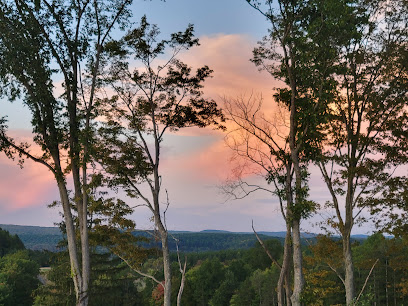
World Famous Horseshoe Curve
Discover the iconic Horseshoe Curve in Altoona, PA – a historical railway marvel offering breathtaking views and rich educational experiences.
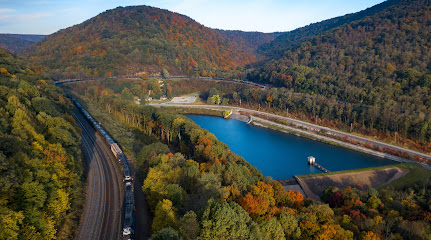
Moshannon State Forest
Discover Moshannon State Forest: A breathtaking Pennsylvania destination for nature lovers, featuring trails, lakes, and abundant wildlife.
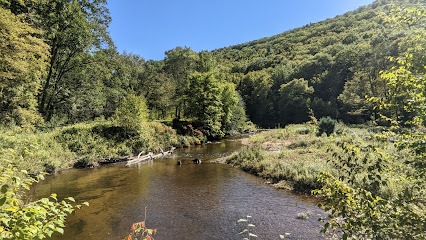
Rimrock Overlook
Experience the stunning panoramic views of Allegheny National Forest at Rimrock Overlook, a scenic gem in Bradford, Pennsylvania.
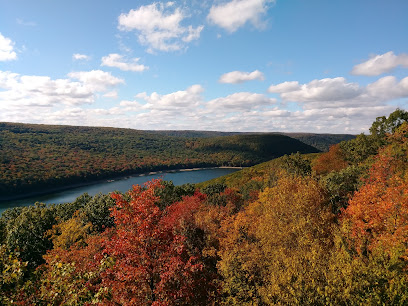
Oil Creek State Park
Discover the beauty of nature and history at Oil Creek State Park, a premier destination for outdoor adventures in Pennsylvania.
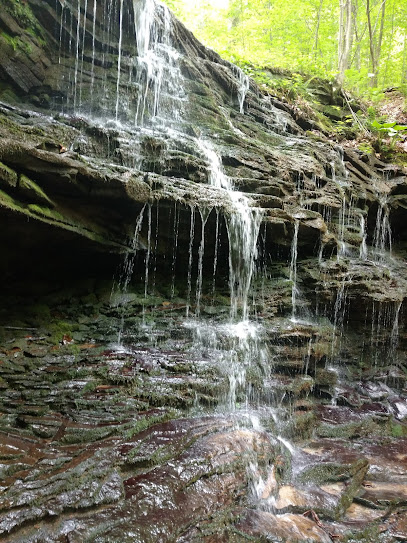
Freedom Falls
Experience the breathtaking beauty of Freedom Falls, one of Pennsylvania's largest waterfalls, set in the lush landscapes of Kennerdell.
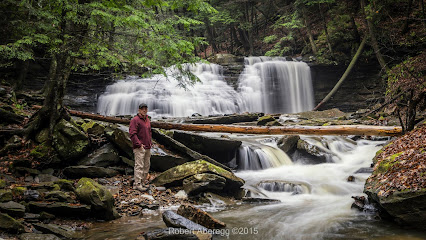
Chapman State Park
Discover the breathtaking landscapes and outdoor adventures at Chapman State Park in Pennsylvania, where nature meets tranquility.
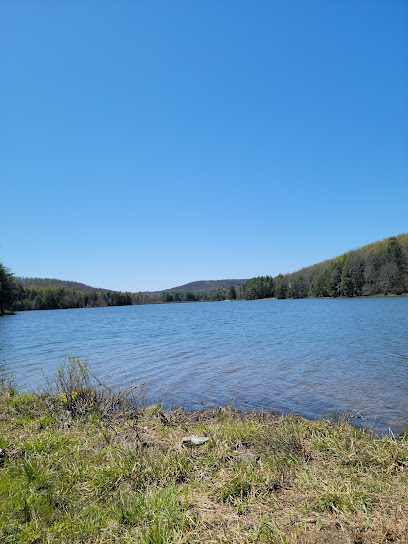
Allegheny Portage Railroad National Historic Site
Explore the Allegheny Portage Railroad National Historic Site - a remarkable journey through Pennsylvania's transportation history amidst stunning natural beauty.
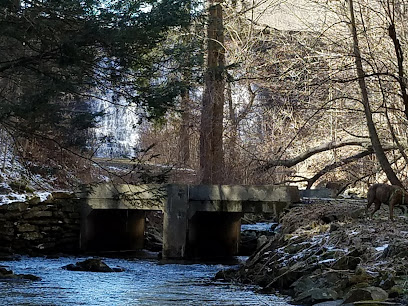
S.B. Elliott State Park
Discover the serene beauty of S.B. Elliott State Park in Pennsylvania, an outdoor paradise for hiking, fishing, and wildlife spotting.
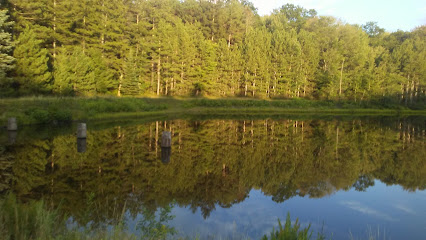
Eldred World War II Museum
Uncover the stories of courage and sacrifice at the Eldred World War II Museum, a unique destination for history enthusiasts and travelers in Pennsylvania.
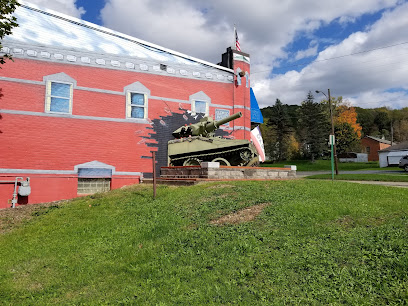
Essential places to dine
Farmer's Inn Restaurant
Experience authentic American cuisine at Farmer's Inn Restaurant in Sigel, PA—a family-friendly haven celebrating local flavors.
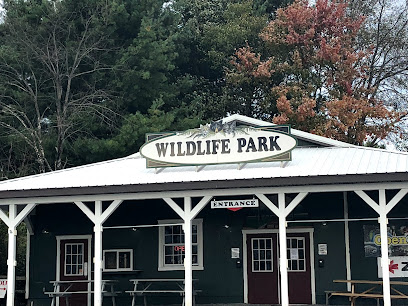
Dutch Pantry Family Restaurant
Experience comforting home-cooked meals at Dutch Pantry Family Restaurant in DuBois - where delicious food meets warm hospitality.
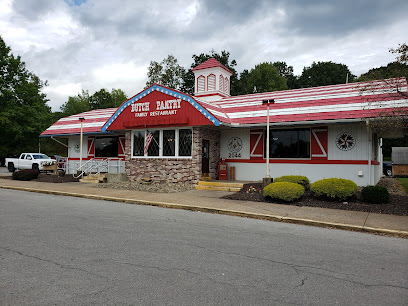
Allegheny Grille
Discover culinary delights at Allegheny Grille in Foxburg, PA—where great food meets stunning river views.
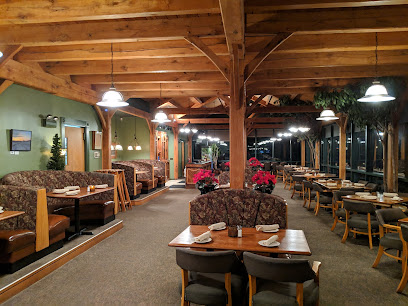
Cousin Basils
Discover Cousin Basils in Clarington - where delicious American cuisine meets warm hospitality amidst beautiful surroundings.
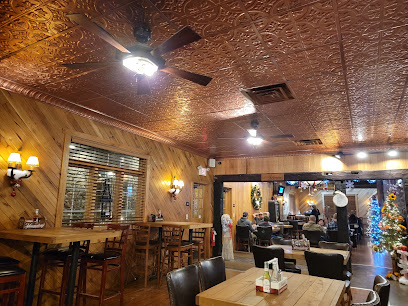
Barrel House
Discover Barrel House in Kane, PA: A delightful bar-restaurant offering local flavors in a cozy atmosphere perfect for relaxation.
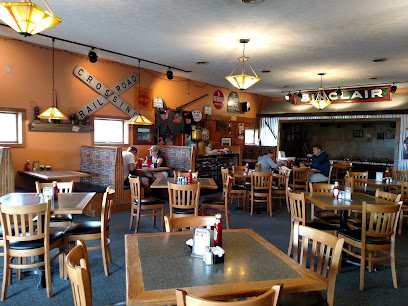
Table 105
Discover culinary excellence at Table 105 in Kane, PA - where fresh seafood meets inviting ambiance for an unforgettable dining experience.
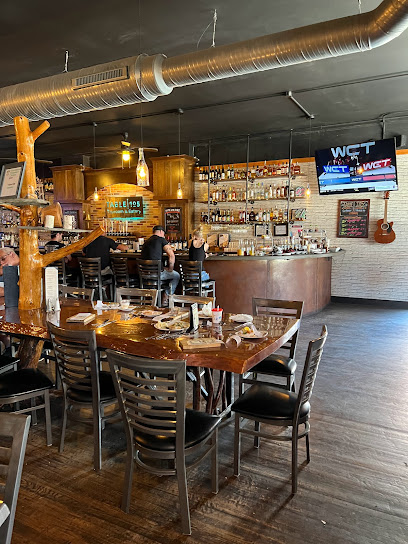
The Summit Lodge & Grill
Experience the perfect blend of rustic charm and delicious cuisine at The Summit Lodge & Grill in Ridgway, PA - your gateway to nature's beauty.
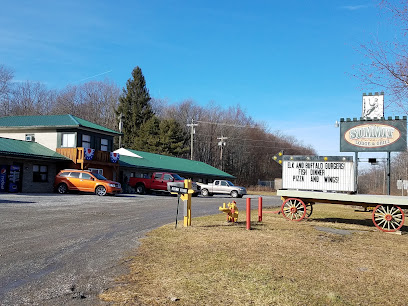
TreeTops Restaurant
Experience exquisite American cuisine amidst breathtaking views at TreeTops Restaurant in Acme, Pennsylvania.
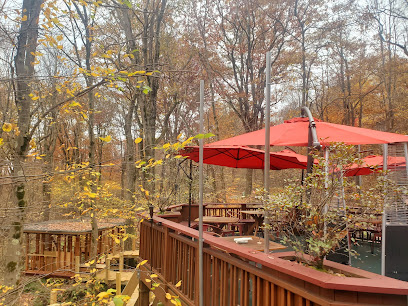
The Hills in the Forest
Discover delightful grilled cuisine at The Hills in the Forest—a perfect blend of nature and flavor awaits you.
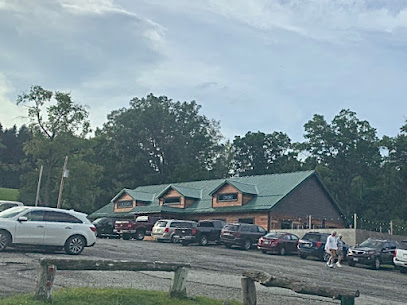
The Sawmill Restaurant
Experience delicious American comfort food at The Sawmill Restaurant in picturesque Leeper, Pennsylvania - a must-visit for every traveler.
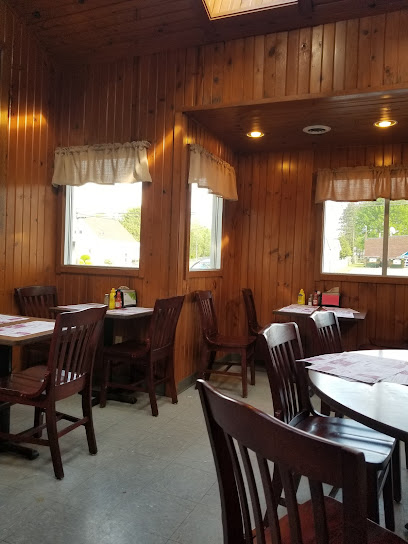
Dam Inn
Experience hearty grilled delights at Dam Inn in Wilcox - where comfort meets flavor in Pennsylvania's serene landscapes.
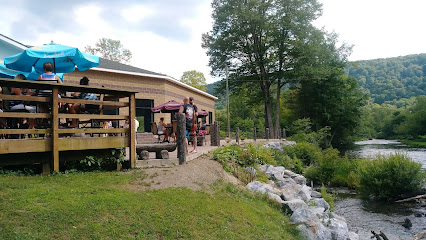
The Little Red Diner
Experience comfort food at its finest at The Little Red Diner in Port Allegany – where every meal feels like home.
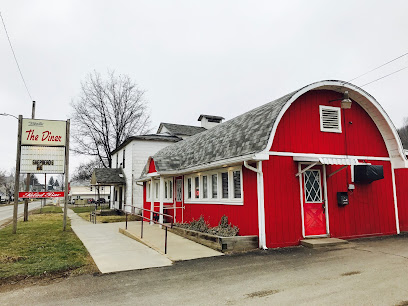
Coal Oil Johnny's Eatery
Experience delightful American cuisine at Coal Oil Johnny's Eatery in Pleasantville – where comfort food meets community spirit.
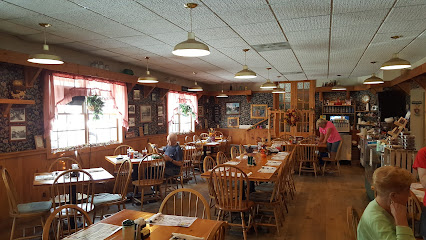
Tack's Inn
Discover Tack's Inn in Lewis Run: A delightful restaurant and bar offering comfort food and local charm in Pennsylvania.
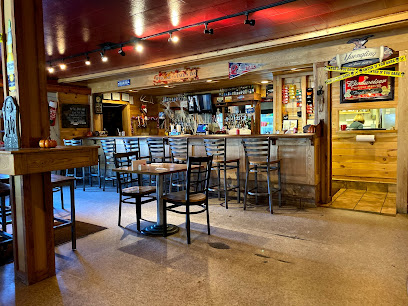
Trail's End Restaurant
Discover family-friendly dining at Trail's End Restaurant in Cook Forest - where delicious meals meet stunning natural beauty.
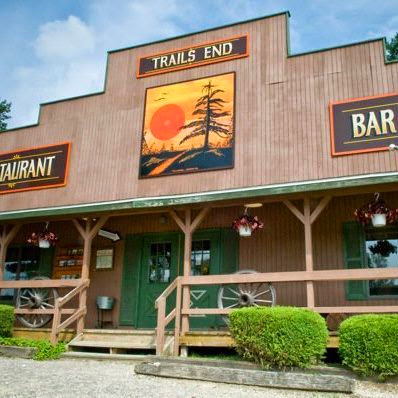
Markets, malls and hidden boutiques
Allegheny National Forest
Explore the natural wonders of Allegheny National Forest, where adventure meets serenity in Pennsylvania's breathtaking landscapes.
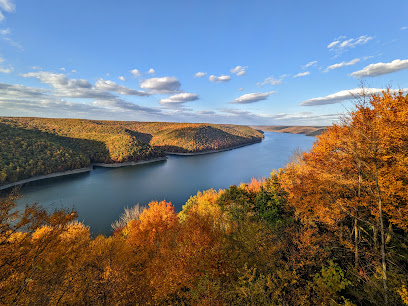
The Johnstown Galleria
Discover the charm of The Johnstown Galleria, a shopping mall in Pennsylvania offering diverse stores, dining experiences, and family-friendly entertainment.

Zippo / Case Museum & Flagship Store
Explore the rich history of Zippo lighters and Case knives at the Zippo/Case Museum & Flagship Store in Bradford, PA.

The Shoppes at Caste Village
Experience shopping, dining, and entertainment at The Shoppes at Caste Village, the ultimate destination for a delightful day out in Pittsburgh.
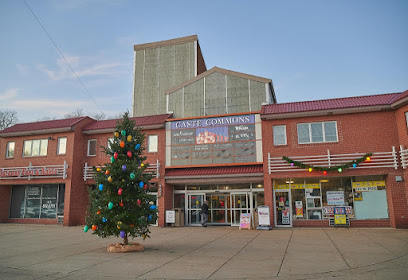
Century III Plaza
Discover Century III Plaza: Your Ultimate Shopping Destination in West Mifflin, Pennsylvania, with Diverse Stores and Dining Options.

The Clarion Mall
Discover a vibrant shopping experience at The Clarion Mall in Pennsylvania, featuring diverse stores, dining options, and family-friendly entertainment.

Leeper Red & White Market
Explore Leeper Red & White Market for fresh local produce and delicious homemade goods in the heart of Pennsylvania's scenic countryside.

Duquesne Plaza
Discover the vibrant shopping experience at Duquesne Plaza, where retail therapy meets dining and entertainment in the heart of Pennsylvania.
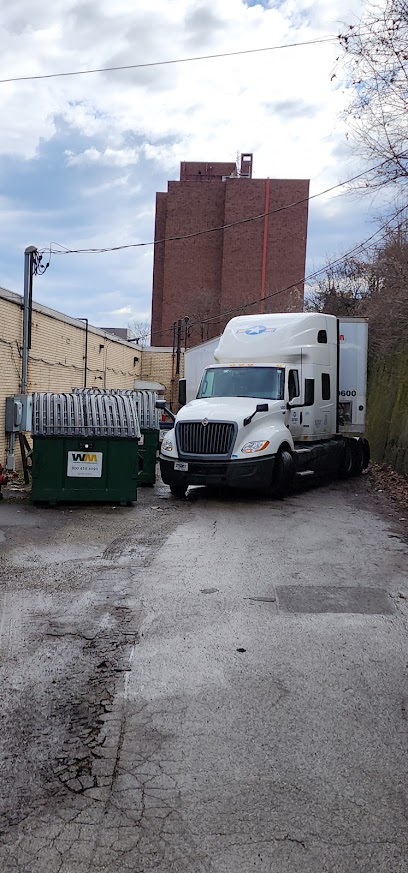
Bent Run Waterfall
Explore the breathtaking Bent Run Waterfall, a hidden gem in Pennsylvania perfect for hiking and nature lovers seeking tranquility in the great outdoors.
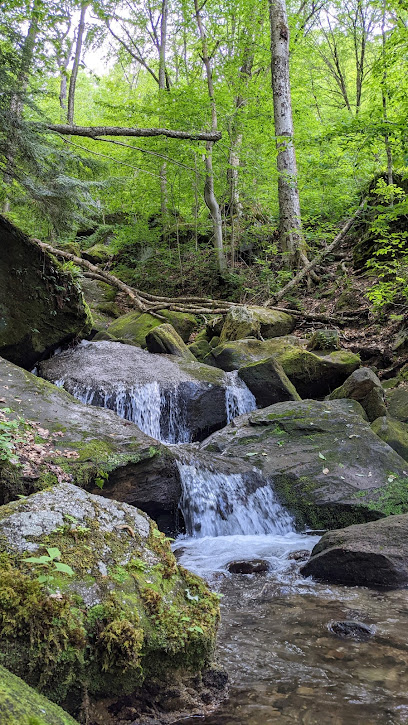
Hallers General Store
Explore Hallers General Store in Tionesta, PA – your go-to destination for local goods, snacks, and a taste of small-town charm.
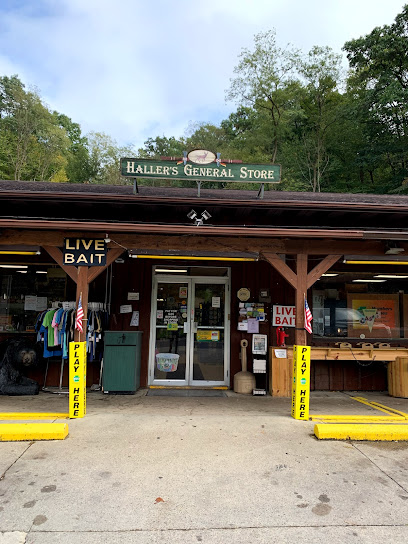
Allegheny Outfitters Outdoors Store
Discover unique outdoor gear, gifts, and kayak rentals at Allegheny Outfitters, your gateway to adventure in beautiful Warren, Pennsylvania.
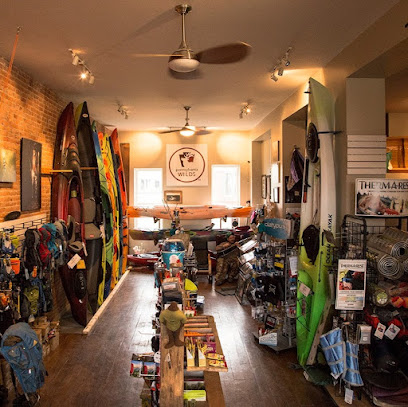
The Pittsburgh Gift Shop
Discover unique souvenirs and local crafts at The Pittsburgh Gift Shop in Ebensburg, a must-visit for travelers exploring Pennsylvania's rich culture.

Parkers Indian Trading Post
Discover the charm of Parkers Indian Trading Post, your go-to gift shop for unique handcrafted treasures in the heart of Cook Forest, Pennsylvania.
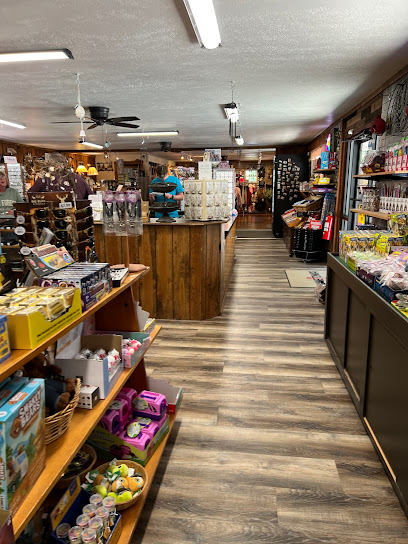
Tall Oaks
Explore Tall Oaks, a charming gift shop in Pennsylvania's Allegheny National Forest, offering unique local crafts and souvenirs that capture nature's beauty.

George's Little Store
Explore the great outdoors with quality gear from George's Little Store, a beloved sporting goods shop in East Hickory, Pennsylvania.
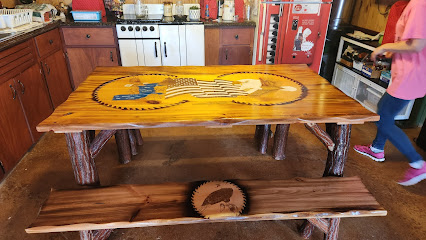
Essential bars & hidden hideouts
Max's Allegheny Tavern
Savor authentic German dishes and an extensive beer selection at Max's Allegheny Tavern in Pittsburgh.
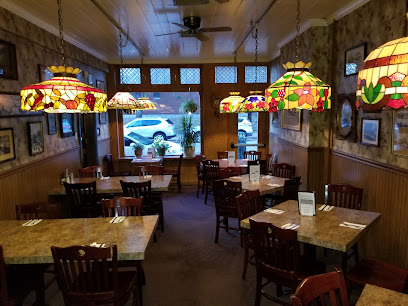
Hofbräuhaus Pittsburgh
Discover authentic German flavors and vibrant atmosphere at Hofbräuhaus Pittsburgh, a must-visit brewery and restaurant in the heart of the city.
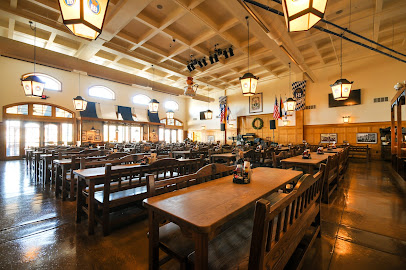
Bar Louie - North Shore
Experience the taste of America at Bar Louie on North Shore, where delicious food meets a vibrant atmosphere in Pittsburgh.
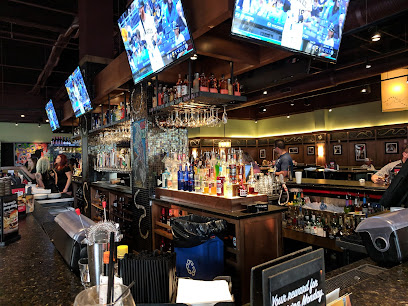
The Crafty Jackalope
Experience the vibrant flavors of American cuisine and craft cocktails at The Crafty Jackalope, Bridgeville's favorite bar and grill.

The Pub at 333
Discover the vibrant atmosphere and delicious local flavors at The Pub at 333, a must-visit bar and restaurant in Oakmont, Pennsylvania.

Railyard Grill & Tap Room
Experience the best of American grill cuisine and local brews at Railyard Grill & Tap Room in Bridgeville, PA.
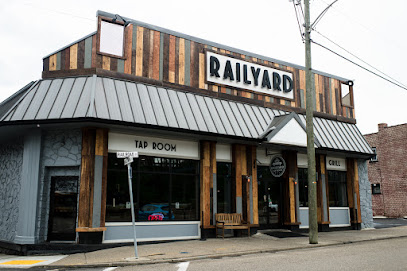
Dive Bar & Grille
Experience the best of American grill cuisine at Dive Bar & Grille in Lawrenceville, Pittsburgh, where flavor meets a laid-back atmosphere.

Hidden Harbor
Experience the vibrant nightlife of Pittsburgh at Hidden Harbor, where craft cocktails meet a cozy bar atmosphere in Squirrel Hill.

Wheelfish
Discover Wheelfish in Pittsburgh: where mouthwatering grilled dishes meet live music for an unforgettable dining experience.

Lefty's
Discover Lefty's, a vibrant bar in Pittsburgh's Strip District, offering a diverse drink selection and lively atmosphere for the perfect night out.

Dee's Cafe
Discover the vibrant atmosphere of Dee's Cafe, a cozy bar & grill in Pittsburgh, where delicious food and friendly service meet.
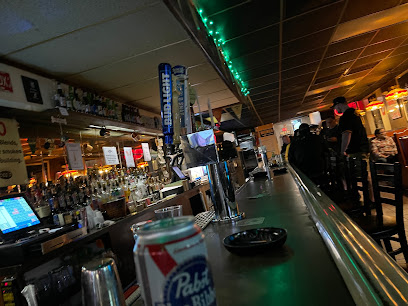
Bob's Garage
Discover Bob's Garage in Pittsburgh, a charming bar known for its festive decor and delightful drinks, perfect for a cozy night out.
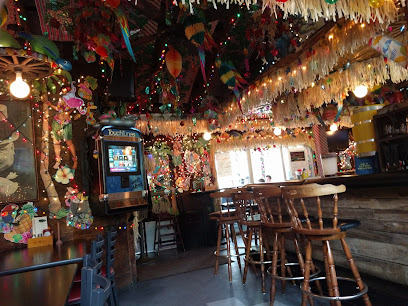
Cole's Pub
Experience the vibrant atmosphere of Cole's Pub in Imperial, PA, where local flavors and friendly faces come together in a cozy setting.
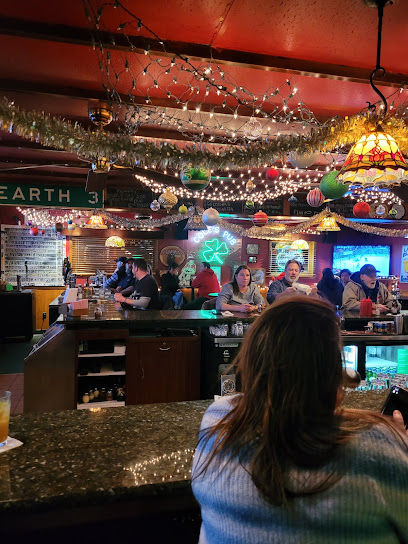
Gooski's
Experience the vibrant atmosphere of Gooski's, a beloved bar in Pittsburgh's Polish Hill, offering a diverse drink selection and lively entertainment.

Otto's Tavern
Discover Otto's Tavern in Emlenton, PA – a charming grill and bar offering mouthwatering dishes and a welcoming atmosphere by the river.
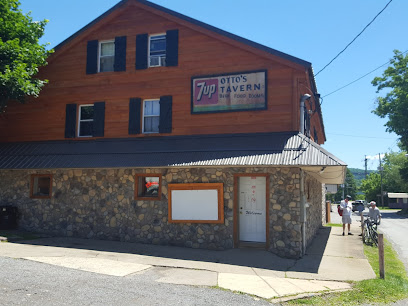
Local Phrases about Allegheny National Forest
-
- HelloHowdy
[haw-dee] - GoodbyeSee ya
[see yah] - YesYup
[yup] - NoNah
[nah] - Please/You're welcomePlease/No problem
[pleez/no problem] - Thank youThanks
[thanks] - Excuse me/SorryPardon me
[par-dun me] - How are you?How ya doin'?
[how yuh doin'] - Fine. And you?Good. How 'bout you?
[good. how 'bout yuh] - Do you speak English?Ya speak English?
[yah speak ing-lish] - I don't understandI ain't gettin' it
[I aint get-tin it]
- HelloHowdy
-
- I'd like to see the menu, pleaseI'd like to see what ya got, please
[I'd like to see what yuh got, please] - I don't eat meatI don't eat no meat
[I don't eat no meat] - Cheers!Bottoms up!
[bot-ums up] - I would like to pay, pleaseI'll settle up now, please
[I'll set-tul up now, please]
- I'd like to see the menu, pleaseI'd like to see what ya got, please
-
- Help!SOS!
[S-O-S] - Go away!Git!
[git] - Call the Police!Get the law on the horn!
[get the law on the horn] - Call a doctor!Ring up a doc!
[ring up a doc] - I'm lostI'm turned around
[I'm turned around] - I'm illI'm feelin' poorly
[I'm feel-in poorly]
- Help!SOS!
-
- I'd like to buy...I'm lookin' to purchase...
[I'm look-in to pur-chase] - I'm just lookingJust browsin'
[just brow-sin] - How much is it?What's the damage?
[what's the dam-age] - That's too expensiveThat's a bit steep
[that's a bit steep] - Can you lower the price?Can ya do better on the price?
[Can yuh do bet-ter on the price]
- I'd like to buy...I'm lookin' to purchase...
-
- What time is it?What's the time?
[what's the time] - It's one o'clockIt's one
[It's one] - Half past (10)Ten-thirty
[ten-thur-tee] - MorningMornin'
[morn-in] - AfternoonAfternoon
[after-noon] - EveningEvenin'
[even-in] - YesterdayYesterday
[yess-ter-day] - TodayToday
[to-day] - TomorrowTomorrow
[to-mor-row] - 1One
[wun] - 2Two
[too] - 3Three
[three] - 4Four
[four] - 5Five
[five] - 6Six
[six] - 7Seven
[seven] - 8Eight
[ate] - 9Nine
[nine] - 10Ten
[ten]
- What time is it?What's the time?
-
- Where's a/the...?Where's the...?
[where's the] - What's the address?What's the street?
[what's the street] - Can you show me (on the map)?Can you point it out (on the map)?
[Can you point it out (on the map)] - When's the next (bus)?When's the next (bus)?
[When's the next (bus)] - A ticket (to ....)A ticket (to ....)
[A ticket (to ....)]
- Where's a/the...?Where's the...?
History of Allegheny National Forest
-
Long before European settlers arrived, the land that is now Allegheny National Forest was inhabited by various Native American tribes, including the Seneca, part of the Iroquois Confederacy. The region was rich in resources, providing ample hunting grounds and materials for crafting tools and shelter. Native American trails crisscrossed the landscape, some of which later became the paths that settlers and explorers would follow.
-
In the early 19th century, European settlers began to establish communities in the region. One of the earliest settlements was Tionesta, founded in 1826. The town served as a hub for the burgeoning lumber industry. The settlers' arrival marked the beginning of significant changes to the forest's landscape as vast tracts of trees were felled for timber.
-
The late 19th and early 20th centuries saw a massive boom in the lumber industry within Allegheny National Forest. Logging companies, drawn by the abundant hardwoods, particularly hemlock and white pine, began large-scale operations. Logging railroads were built to transport timber to mills, and logging camps sprang up throughout the forest. This period transformed the landscape dramatically, leading to deforestation and changes in the ecosystem.
-
In 1923, the federal government recognized the need to preserve and restore the heavily logged land. The Allegheny National Forest was officially established, becoming Pennsylvania’s only national forest. This move aimed to promote conservation, restore wildlife habitats, and provide recreational opportunities for the public. Reforestation efforts began, with millions of trees planted to rejuvenate the land.
-
During the Great Depression, the Civilian Conservation Corps (CCC) played a critical role in the restoration and development of Allegheny National Forest. The CCC built roads, trails, and recreational facilities, and continued reforestation projects. Their work laid the foundation for the modern infrastructure visitors enjoy today. The legacy of the CCC is evident in the many structures and trails still in use.
-
In the 1960s, the construction of the Kinzua Dam on the Allegheny River created the Allegheny Reservoir, one of the key features of the forest today. While the dam provides flood control, hydroelectric power, and recreational opportunities, its construction also led to the displacement of the Seneca people from their ancestral lands. The reservoir and dam are now central attractions, balancing utility with natural beauty.
-
In recent years, the discovery of natural gas reserves in the Marcellus Shale has brought new economic opportunities and environmental challenges to the Allegheny National Forest. Balancing resource extraction with conservation efforts has become a critical issue. The forest continues to be a site of ecological research and environmental advocacy, striving to maintain its natural beauty and biodiversity amidst modern pressures.
Allegheny National Forest Essentials
-
Allegheny National Forest is located in northwestern Pennsylvania. The nearest major airports are Pittsburgh International Airport (PIT) and Buffalo Niagara International Airport (BUF), both approximately 2-3 hours away by car. From these airports, you can rent a car and drive to the forest. Alternatively, you can take a bus or train to nearby cities like Bradford or Warren and then use local transportation to reach the forest.
-
Having a car is the most convenient way to explore Allegheny National Forest, as it allows you to visit remote areas and scenic spots at your own pace. Car rentals are available at nearby airports and cities. For those who prefer not to drive, local taxis and ride-sharing services like Uber are available, but may be limited in more remote areas. Biking and hiking are also popular ways to get around within the forest.
-
The official currency is the United States Dollar (USD). Credit and debit cards are widely accepted, but it is advisable to carry some cash for smaller establishments or remote areas where card payments may not be possible. ATMs are available in nearby towns like Bradford and Warren.
-
Allegheny National Forest is generally safe for tourists. However, standard safety precautions should be taken. Avoid wandering alone in remote areas after dark and always let someone know your hiking or travel plans. Wildlife encounters can occur; always keep a safe distance from animals. While there are no specific high-crime areas targeting tourists, it's best to stay vigilant and aware of your surroundings.
-
In case of emergency, dial 911 for immediate assistance. For non-urgent medical needs, there are hospitals in nearby towns such as Bradford Regional Medical Center and Warren General Hospital. It is recommended to have travel insurance that covers medical emergencies. Rangers and park staff are also available to assist in emergencies within the forest.
-
Fashion: Do wear comfortable, weather-appropriate clothing and sturdy footwear for hiking. Avoid wearing open-toed shoes on trails. Religion: There are no specific religious customs to observe, but always respect local traditions and the natural environment. Public Transport: Public transport options are limited; car rentals or biking are more practical. Greetings: A friendly hello or handshake is common. Eating & Drinking: Do try local specialties at nearby towns' eateries. Don't leave food unattended in the forest to avoid attracting wildlife.
-
To experience Allegheny National Forest like a local, consider visiting during the fall for stunning foliage or winter for snow activities. Engage with locals at community events or farmers' markets in Bradford and Warren. Don't miss the Kinzua Sky Walk for breathtaking views and the annual Allegheny Reservoir Cleanup event, where you can contribute to preserving the natural beauty of the area.
Nearby Cities to Allegheny National Forest
-
Things To Do in Buffalo Town
-
Things To Do in Buffalo
-
Things To Do in Youngstown
-
Things To Do in Pittsburgh
-
Things To Do in Niagara Falls
-
Things To Do in Weirton
-
Things To Do in Rochester
-
Things To Do in Akron
-
Things To Do in Canton
-
Things To Do in Cleveland
-
Things To Do in Ithaca
-
Things To Do in Toronto
-
Things To Do in Wheeling
-
Things To Do in Morgantown
-
Things To Do in Hagerstown










